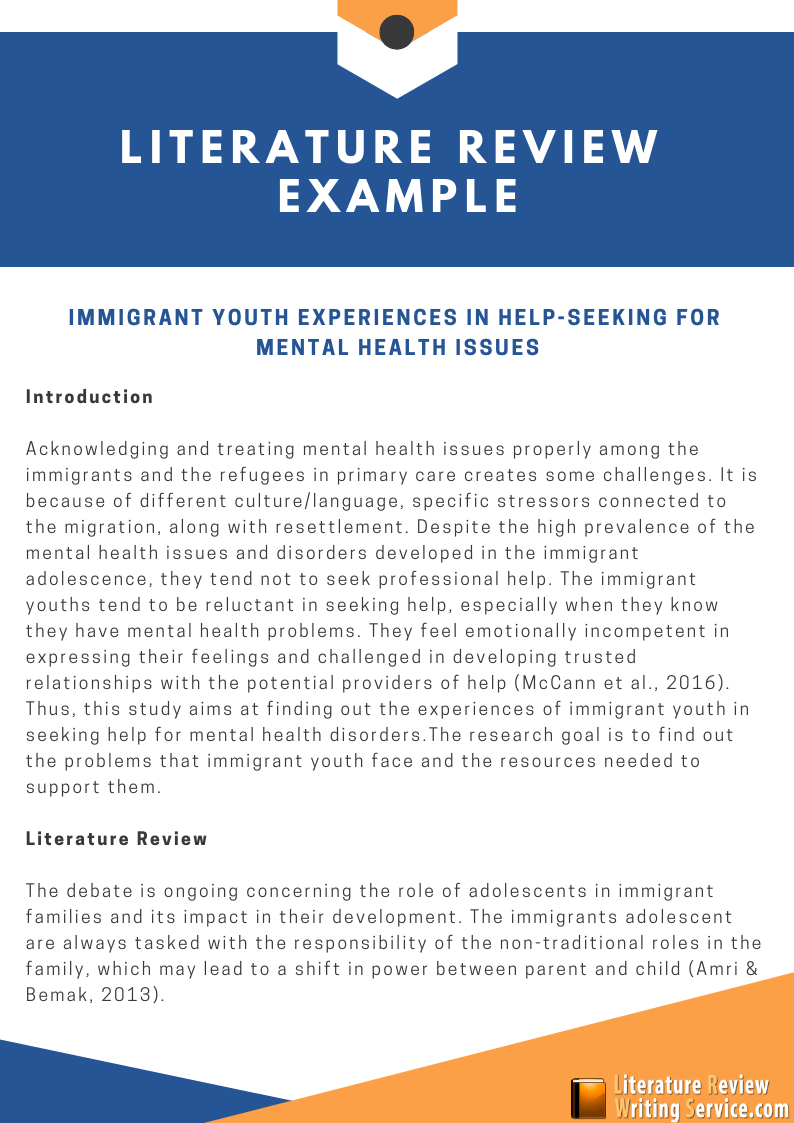
A literature review is a document or section of a document that collects key sources on a topic and discusses those sources in conversation with each other (also called synthesis). The lit review is an important genre in many disciplines, not just literature (i.e., the study of works of literature such as novels and plays) 2/22/ · Writing a literature review involves finding relevant publications (such as books and journal articles), critically analyzing them, and explaining what you found. There are five key steps: Search for relevant literature; Evaluate sources; Identify themes, debates and gaps; Outline the structure; Write your literature review 6/8/ · Through a deep analysis of the paper or topic, the literature review should help the writer and scientific community to understand the advances of this specific scientific subject
The Literature Review | A Complete Step-by-Step Guide
Nowadays, there is a huge demand for scientific literature reviews as they are especially appreciated by scholars or researchers when designing their research proposals. While finding information is less of a problem to them, discerning which paper or publication has enough quality has become one of the biggest issues. This way, they are priceless tools not only for those who are starting their research, how to structure a scientific literature review, but also for all those interested in recent publications.
To be useful, literature reviews must be written in a professional way with a clear structure. The amount of work needed to write a scientific literature review must be considered before starting one since the tasks required can overwhelm many if the working method is not the best. Writing a scientific review implies both researching for relevant academic content and writinghowever, writing without having a clear objective is a common mistake.
Therefore, we suggest that you divide your path into three steps. Think about your target and narrow down your topic. Remember that researchers usually deal with really specific fields of study. It is time to how to structure a scientific literature review a critic and locate only pertinent publications. While researching for content consider publications that were written 3 years ago at the most. Write notes and summarize the content of each paper as that will help you in the next step.
Check some literature review examples to decide how to start writing a good literature review. When your goals and structure are defined, how to structure a scientific literature review, begin writing without forgetting your target at any moment. Related: Conducting a literature survey?
Wish to learn more about scientific misconduct? Check out this resourceful infographic. Here you have a to-do list to help you write your review :. Scholars and researchers are usually the best candidates to write scientific literature reviews, not only because they are experts in a certain field, but also because they know the exigencies and needs that researchers have while writing research proposals or looking for information among thousands of academic papers.
Therefore, considering your experience as a researcher can help you understand how to write a scientific literature review. Have you faced challenges while drafting your first literature review? How do you think can these tips help you in acing your next literature review?
Let us know in the comments section below! Subscribe for free to get unrestricted access to all our resources on research writing and academic publishing including:. We hate spam too. We promise to protect your privacy and never spam you. Literature review tips. Last updated Mar 25, Show Comments 2.
How to Write a Literature Review: 3 Minute Step-by-step Guide - Scribbr ��
, time: 3:05The structure of a literature review - The Royal Literary Fund
How to structure a scientific literature review? • Introduction: An overview of the topic under consideration, along with the objectives of the literature review. • Main body: Critical analysis, evaluation of topically relevant research/data; Break into sub-headings • Conclusion: Summarise the key points from your review Scientific Literature Review:File Size: 1MB Get the outline of the review right – your review will likely require multiple iterations, and a strong outline can make things easier further down the line. Always try to include the highest quality version of the images, and always invest time drawing the schematics as best you can (I always go back to the Figures I liked in the literature before I start making my versions) 6/8/ · Through a deep analysis of the paper or topic, the literature review should help the writer and scientific community to understand the advances of this specific scientific subject

No comments:
Post a Comment